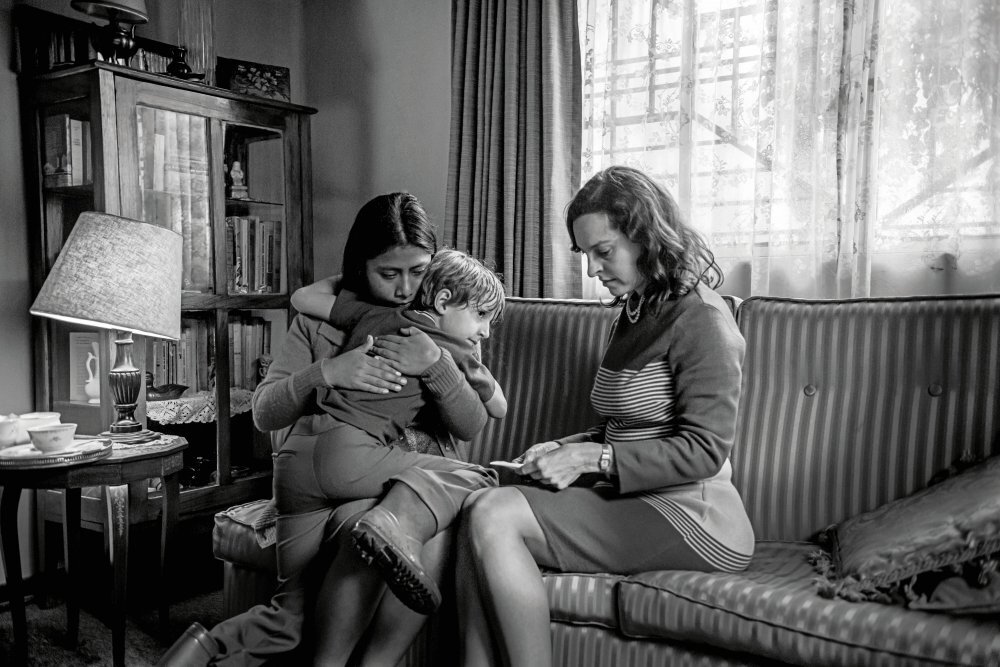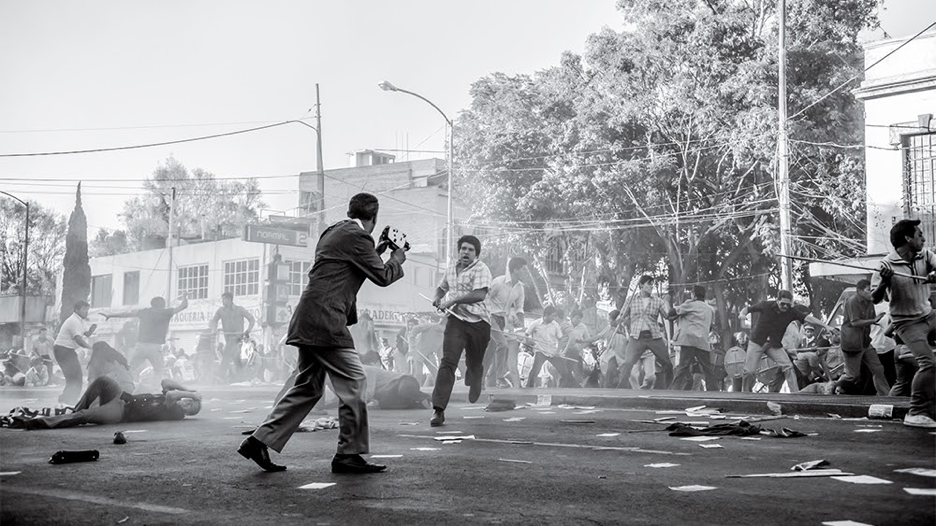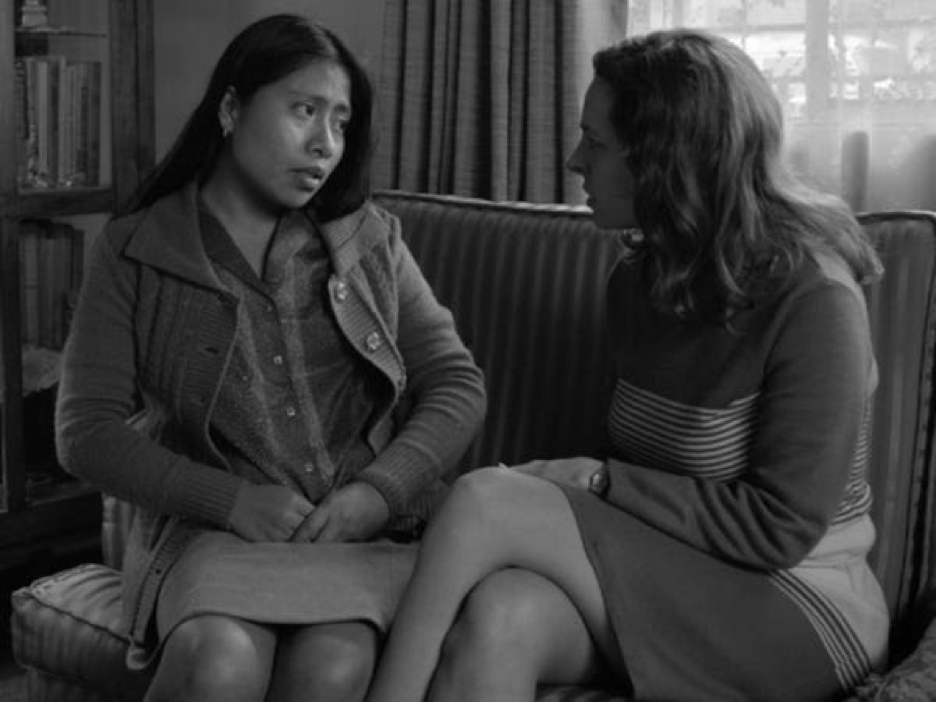Review: Roma
Alfonso Cuarón’s ode to his upbringing in Roma is both personal and universal in equal proportions. He uses a character too often relegated to the background by Hollywood to tell a story of the struggle, pain, and ultimate triumph of the human spirit.
Roma tells the story of Cleo (played by Yalitza Aparicio), an indigenous live-in maid who works in an affluent household in Mexico City. Her struggles are personal and professional with her being mostly alone in navigating her quagmires. Her story is interwoven with the story of her context in 1970-71 Mexico: a country rife with strife and unrest, and ingrained with a deeply unequal society and culture. An important supporting role is played by her employer, Sofía (played by Marina de Tavira), who helps and supports her in times of need.
Roma is not only a powerful story but also a technical masterpiece. In this review, I’ll explore both of these components to understand how Cuarón succeeds (and sometimes errs) in telling a story that is real and poignant.
The direction of Roma is unique, with an evident maturity in the choice of image and tone rarely observed in modern cinema. The black and white color of the film is an important aspect here. Cuarón has said that the color choice was to enhance how personal the film felt to the audience. However, the modern argument for black and white filmmaking after the 1970s is largely premised on its ability to add a documentary-like veneer to the film. Films like Schindler’s List and The Artist were premised upon this, helping transport us to another time and thoroughly enveloping the viewer with the context. Cuarón’s choice to do so with Roma, therefore, is also telling of his want to keep the sanctity of the context, a time which was only recorded in black and white. Apart from this, the color duality builds into the overall somber tone of the film, helping add to its realism.
The cinematography of the movie (also by Cuarón) complements this choice, with meditative movements of the camera to produce large, expansive shots. The lack of hasty cuts makes us almost feel like a fly on the wall observing real events, and therefore further engages us with the personal nature of the story. Towards the end of the movie, Cuarón complements his writing with wonderful use of contrast and chiaroscuro to show the return of happiness and light, with certain shots so evocative that one would imagine they were painted by an artist.
However, while valid and powerful, I think that the choice to make the film black and white had certain downsides. The most important aspect of color in film, according to me, is its ability to indicate emotion. Wes Anderson is the perfect example of the argument that color is one of the most powerful tools a filmmaker can possess. Cuarón’s choice to relinquish it therefore puts the impetus on the viewer to interpret the emotion and places an undue burden on the actors. Roma is a movie about the unnoticed and stereotyped, and removing color makes interpreting the subtle nature of the characters only harder.
The discussion on the vagueness and emphasis on viewer interpretation brings me to my chief criticism of the film. Cuarón makes a Kubrickian choice to not clearly show or indicate the emotional tension for much of the early part of Roma, instead lavishing the viewer with wide shots. By doing so he aims to invite the viewer to craft their own meaning from the film. While that is an appealing goal, I believe the vagueness of Roma reaches a point where it begins to confuse the viewer, thereby causing a temporary disconnect with the story. This is perhaps best evidenced by the quick location changes with insufficient background about each new location, causing confusion in the viewer. The clear styles of directors like Steven Spielberg suggest that inviting viewers on the story’s journey requires directors to intentionally leave clues on the way, such as not being vague for a while to help add clarity to the story progression. Regrettably, Cuarón only adds clarity towards the end of the film, making the earlier portions quite confusing.
The vague nature of the earlier portions of the film meant the director was heavily reliant on the actors to help the viewer. Thankfully, they delivered and more. Yalitza Aparicio, a first-time actor, gives a performance of astounding depth and virtuosity. The appropriate casting meant that she felt both natural and authentic in her role, whether it was talking to her friend in Mixtec or while breaking down due to incalculable loss. Marina de Tavira complements her with an assured yet vulnerable performance as an employer with her own struggles.
The technical achievements, while impressive, pale in comparison to the depth of Roma’s story. In actuality, Cuarón tells two different stories: the story of the foreground and the story of the background. Harkening back to his earlier film Y tu mamá también, Cuarón uses Roma to show how the disruption and change in Mexico at the time is similar to the change in Cleo’s life. The emergence of the Los Halcones in Mexican society mirrors the emergence of disruption in Cleo’s life. The interweaving of the story has the profound impact of making us almost live Cleo’s journey by her side, experiencing her context and her thoughts.
Fundamentally, the uniqueness of Roma comes from the fact that it manages to do the seemingly impossible task of both exploring the nuance of the main character and distilling her journey down to simple components. Along her journey, Cleo experiences pain and weathers it enduring remarkable hardship in the process. Her breakdown and catharsis at the end elucidate the fundamental conundrum of her personality: she does not know where she belongs. Is it with her employer’s family, or with her own? Is it with partners who do not value her or her friends? The story of Cleo is a story of belonging, and for all the complexity that we might not understand, her story is one with which we can all empathize.
It is well known that Cuarón never wrote a physical script for this film. Instead, he’s proven through Roma that to tell a powerful story, one only needs to tell it from the heart. To quote Bong Joon-Ho who was quoting Martin Scorsese in his Oscar speech, “The most personal is the most creative”. Mr. Cuarón, you’ve proven just that.



